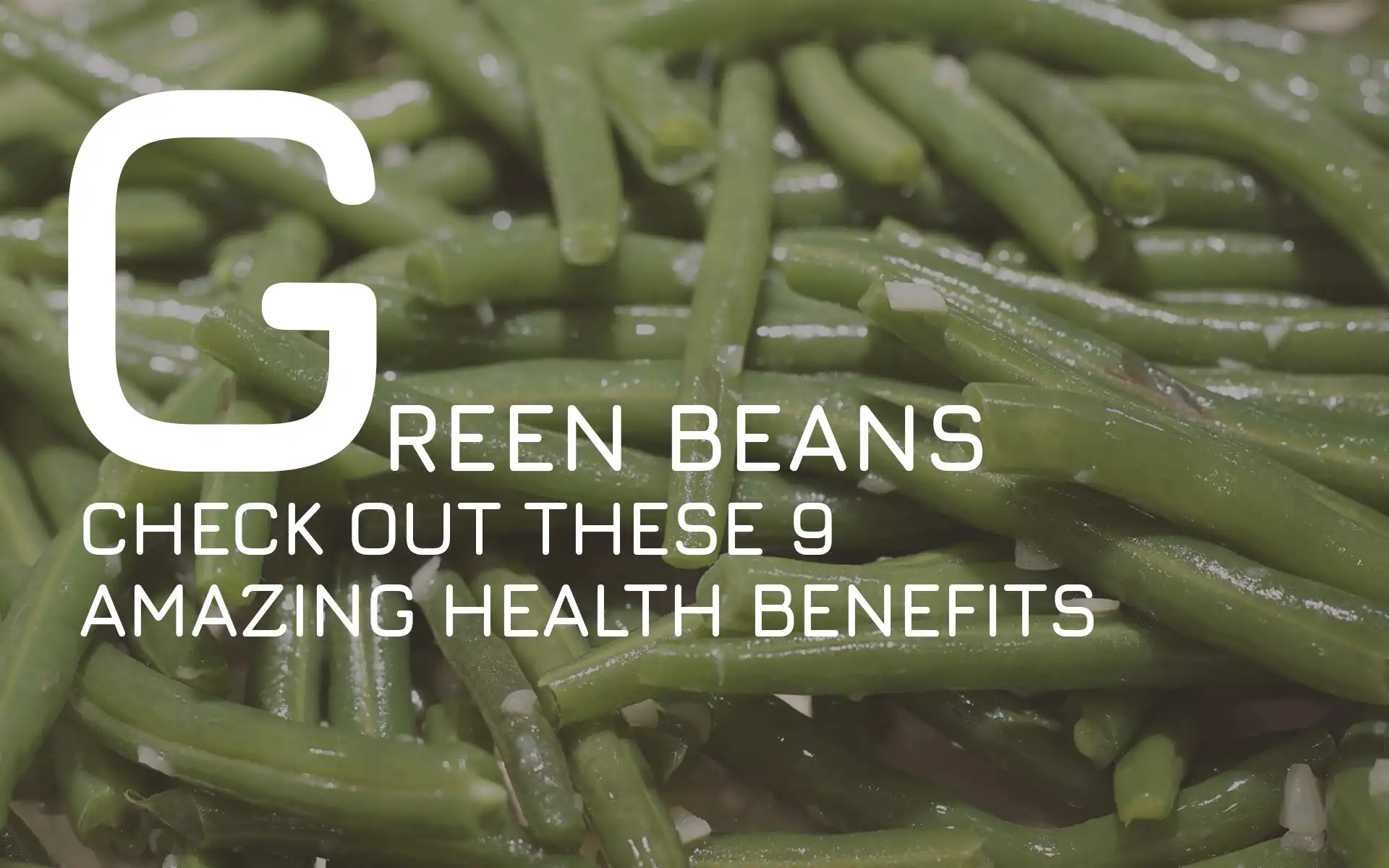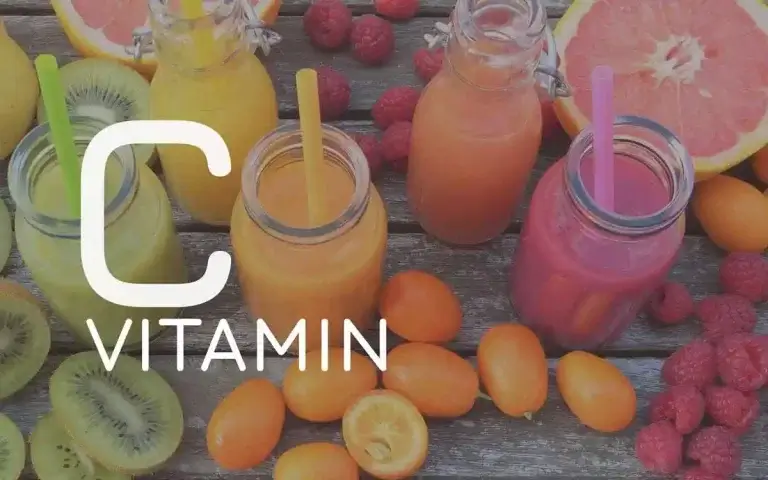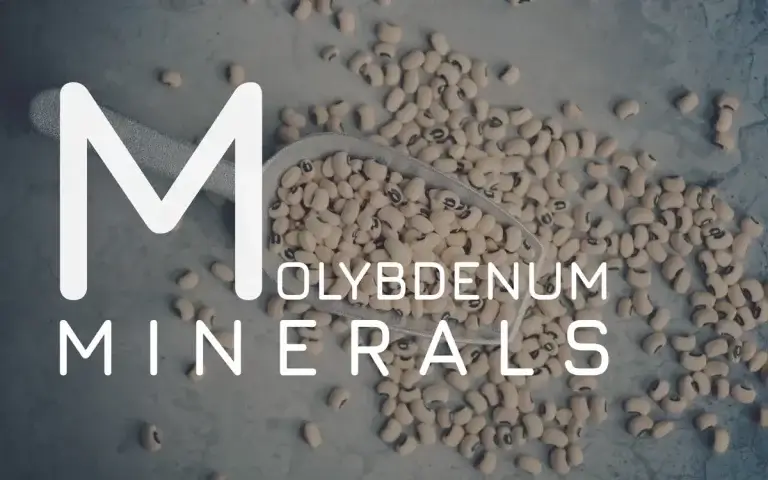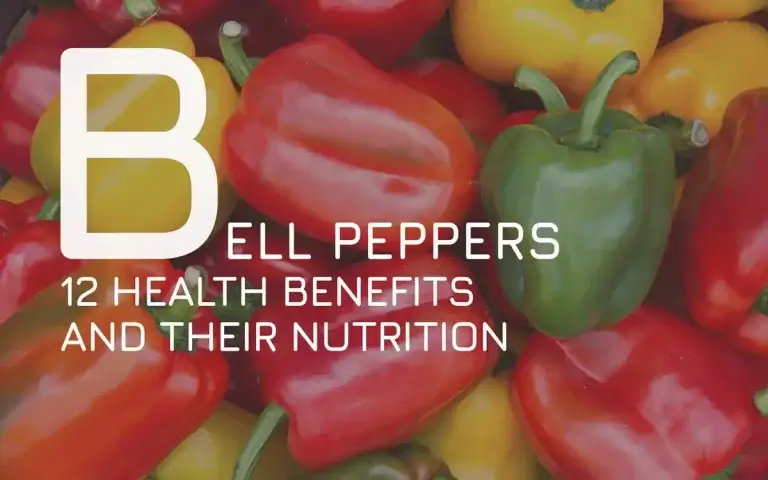Check out these 9 amazing health benefits of green beans
Have you ever heard of the amazing health benefits of green beans? You may not know this about them though: They’re packed with nutrients and will help keep your body running smoothly! In addition to being high in fiber (which helps lower cholesterol), these little legumes contain protein that repairs tissue damage from exercise or stress; antioxidants for fighting off free radicals in our body’s cells – protecting against aging skin problems like wrinkles.
What are green beans?
Green beans, also known as snap beans or string beans, are a type of legume harvested while the bean is still young and tender. The two main types of green beans are bush beans and pole beans. Bush beans are compact plants that do not need support, while pole beans require some form of support, such as a trellis or fence.
The pods are typically green in color, although there are also varieties that feature purple or yellow pods. They are usually eaten fresh, although they can also be canned or frozen for later use. Frozen green beans are a convenient option when fresh green beans are not in season.
When selecting green beans at the grocery store, look for firm, brightly colored pods that are free from blemishes. Avoid any beans that are wilted or have brown spots. They can be cooked in a variety of ways, including steaming, boiling, and roasting. They pair well with a number of other ingredients, such as garlic, onions, and herbs. Whether you cook them on their own or use them as part of a larger dish, green beans make a delicious and healthy addition to any meal.
Types of green beans
The three most common types of green beans are snap beans, string beans, and runner beans.
Snap beans or French beans are the most popular type of green bean in the United States and Europe. These plump, tender beans can be eaten raw or cooked and are often used in salads, stir-fries, and casseroles.
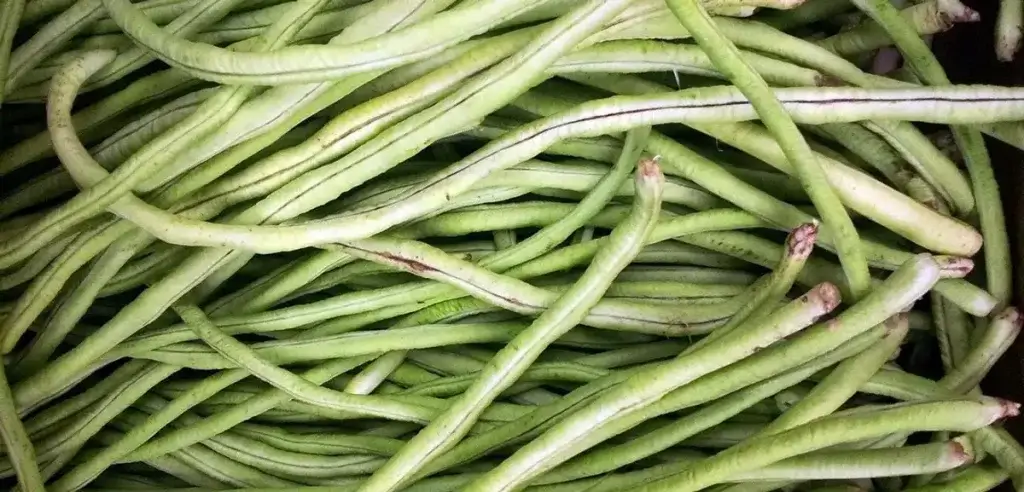
String beans, also known as haricots verts, are thinner and more delicate than snap beans. They are often used in French cuisine, where they are usually steamed or sauteed.
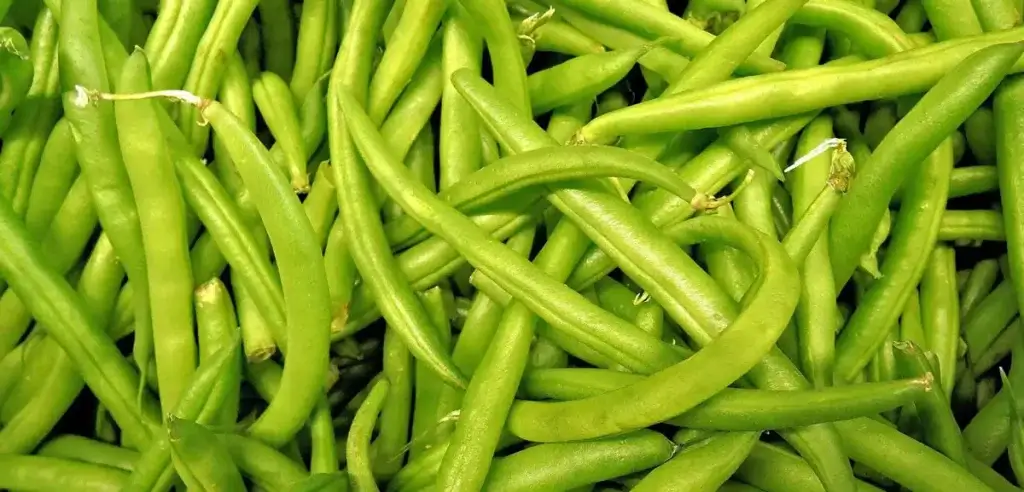
Runner beans are the largest type of green bean and have a slightly tougher texture. They are popular in Central and South America, where they are often stewed with other ingredients such as tomatoes, onions, and spices. Green beans are a good source of vitamins A and C, as well as fiber and iron.

Green beans nutrition facts
Green beans, also known as string beans, are a type of legume harvested when the beans are young and tender. They can be eaten raw, cooked, or canned, and are a popular ingredient in many dishes. Green beans are a good source of vitamins C, K and A, as well as fiber and iron. They also contain phytonutrients, which are believed to have several health benefits.
100 grams of fresh green beans contain the following nutrients:
- 90 calories
- 7 grams carbohydrates
- 0.2 grams fat
- 1.8 grams protein
- 2.7 grams fiber
- 43 micrograms Vitamin K (48% of RDI)
- 12 milligrams Vitamin C (16% of RDI)
- 690 1550 IU Vitamin Α (14% of RDI)
- 1 milligrams iron (13% of RDI for men, 6% of RDI for women)
- 0.22 milligrams manganese (12% of RDI)
- 0.14 milligrams Vitamin B6 (11% of RDI)
- 33 micrograms Vitamin B9 – folate (8% of RDI)
- 211 milligrams potassium (8% of RDI)
- 0.1 milligrams Vitamin B2 – riboflavin (8% of RDI)
- 25 milligrams magnesium (8% of RDI)
- 0.07 milligrams copper (8% of RDI)
- 0.08 milligram Vitamin B1 – thiamin (7% of RDI)
- 38 milligrams phosphorus (5% of RDI)
- 0.41 milligrams vitamin E (3% of RDI)
- 0.7 milligrams Vitamin B3 – niacin (5% of RDI)
- 0.22 milligrams Vitamin B5 – pantothenic acid (4% of RDI)
- 0.24 milligrams zinc (3% of RDI)
- 37 milligrams calcium (3% of RDI)
- 6 milligrams Sodium (>1% of RDI)
- 0.6 micrograms Selenium (1% of RDI)
- 379 micrograms Carotene, beta
Health benefits of green beans
Green beans are a good source of fiber, which can help to regulate digestion and prevent constipation. They are also a low-calorie food, making them an excellent choice for people who are trying to lose weight. Additionally, green beans are a good source of vitamins A, C, and K, as well as minerals such as iron and potassium. They have been shown to lower cholesterol levels, regulate high blood pressure and protect against heart disease. They may also help to reduce the risk of cancer. So, next time you’re looking for a healthy addition to your diet, reach for some green beans. You’ll be glad you did!
1. HIV is slowed in the body.
While there is currently no cure for HIV, scientists have made significant progress in developing treatments that can slow the spread of the virus in the body. Now, new research suggests that a compound found in green beans may also help to slow the progression of HIV.
The nutrients in French green beans, according to a study from Hong Kong, significantly inhibits reverse transcription in HIV-1 cells, the more common form of HIV. Green beans, in combination with antiretroviral therapy and other HIV/AIDS-fighting nutrients, appear to be a long-term treatment option for sufferers of these viruses. Green beans, therefore, may help to slow the spread of HIV in the body.
2. It aids in the treatment of cancer and its prevention
The antioxidants found in green beans help to protect cells from damage caused by free radicals. Free radicals are unstable molecules that can lead to the development of cancerous cells.
In addition, green beans contain phytochemicals, which are plant-based chemicals that have been shown to block the growth of cancer cells. Green beans are also a good source of fiber, which has been linked with a reduced risk of colorectal cancer.
Research has found that the health benefits of green beans are related to their Anticarcinogenic activity. Resistant starch, phenolic compounds, soluble and insoluble dietary fiber, and other micronutrients such as protease inhibitors, phytic acid, and saponins are all responsible. These micronutrients aid in the prevention of cancer by acting on the body’s anticancer mechanisms, regardless of whether or not they contain antioxidant properties from green bean consumption.
They also contain antioxidants like lutein, which have been shown to inhibit the growth of leukemia, breast cancer, and lymphoma cells. Regular consumption of green beans has been associated with a lower risk of breast, colon, and prostate cancer.
Green beans are a great source of vitamins C and K. Vitamin C is known to help fight and prevent cancer. Many health practitioners also use vitamin C to supplement chemotherapy drugs, as the vitamin helps the drugs target only the cancerous cells, rather than the entire body. Vitamin K has been shown to reduce the risk of prostate, colon, stomach, nasal and oral cancer. Green beans are a great way to get your daily recommended intake of these important vitamins.
3. Lowers the risk of getting diabetes and helps to control it
They are a good source of fiber, which can help to regulate blood sugar levels and prevent spikes in blood sugar. They are also a good source of magnesium, which is essential for proper insulin function.
Foods like green beans can play a role in both your potential risk of developing diabetes, as well as helping you manage the chronic condition if you have been diagnosed. That’s why green beans are an important part of any diabetic diet plan. Low glycemic index diets have been shown to help regulate the body’s response to insulin, and improve insulin sensitivity. Additionally, hypoglycemic foods have been shown to decrease the glucose tolerance curve by 5 percent or more.
Common beans, including green beans, have been found to help nutritionally control diabetes. Researchers discovered that, when given to diabetic rats, these beans caused a significant drop in glucose, triglycerides, overall cholesterol and LDL cholesterol. This is consistent with the protection of beta cells in the pancreas, which are damaged in patients with diabetes and cause the body to underproduce and fail to release insulin.
So if you’re looking for a food that can help you manage your diabetes or prevent the condition from developing, be sure to add green beans to your diet.
4. Repairs cell damage
They are a nutrient-dense food, providing a range of benefits for overall health. One of the most noteworthy benefits is their ability to repair cell damage. Green beans are rich in antioxidants, specifically vitamin C, which helps protect cells from free radical damage. In addition to reducing cell damage, vitamin C also promotes collagen production, enhances immunity, and aids in iron absorption.
5. Reduces the risk of heart disease
Studies have shown that green beans can help to protect your heart from disease. One study found that people who ate green beans four or more times per week had a lower risk of developing coronary heart disease than those who did not eat them.
Beans are a good source of dietary fiber and resistant starch, which help lower cholesterol levels. Dietary fiber binds with cholesterol in the intestine, preventing it from being absorbed into the body. Resistant starch also helps to reduce cholesterol levels by delaying the absorption of glucose from food. This means that your body will burn more fat instead of glucose for energy, leading to a reduction in cholesterol levels.
In addition to reducing cholesterol levels, beans also help to manage the metabolic syndrome. Metabolic syndrome is a cluster of conditions that are associated with an increased risk of heart disease, stroke and diabetes. Beans can help to manage metabolic syndrome by controlling appetite and promoting weight loss.
Another benefit of eating beans is that they can decrease the risk of coronary heart disease. A study found that eating just ¾ cup of green beans per day decreased the risk of heart attack by 38 percent.
Furthermore, they are high in both vitamin K and lutein. Vitamin K is important for helping to keep calcium out of your arteries, which can help to prevent plaque deposits from forming. This can reduce your risk of developing coronary artery disease and heart attack.
Lutein is also beneficial for protecting your heart health. It helps to keep the walls of your arteries healthy and may reduce your risk of developing heart disease.
6. Important for a healthy digestive system
Green beans are an excellent source of dietary fiber, which is important for a healthy digestive system. The fiber in green beans helps to bulk up stools, making them softer and easier to pass. This can help to reduce the risk of constipation and other digestive disorders.
7. Improves bone health
Green beans are an excellent source of Vitamin K. Just one cup of green beans contains over 80% of the recommended daily intake of Vitamin K. Vitamin K is essential for blood clotting and for maintaining bone health.
Vitamin K deficiencies can lead to a condition called osteoporosis, which causes the bones to become weak and brittle. Older people are especially at risk for developing osteoporosis, but increasing the intake of Vitamin K can help to reduce the risk. Green beans are a delicious and nutritious way to increase your intake of Vitamin K and help keep your bones strong and healthy.
8. Improves fertility and newborns protection
Beans and other legumes are high in nutrients, including folate and iron, which are important for improving fertility. They’re also low on the glycemic index, which means they’re digested more slowly. Beans and other legumes are excellent sources of nutrition for people at risk of infertility since they’re rich in folate and iron, two components that have been shown via research to aid reproductive health.
Folic acid and other antioxidants aid in the development of a healthy baby. Folate, unlike many other vitamins, is essential for both males and females to have a higher level of fertility. A diet with a lot of folate is associated with a decreased risk of numerous birth abnormalities. This is why you should avoid folate deficiency, which can be remedied by eating green beans.
9. May support brain function and mental health
Green beans contain vitamin B6, which helps to decrease the level of homocysteine in the blood. Homocysteine is an amino acid that can inhibit brain development. By keeping homocysteine levels in check, green beans may help support healthy brain function. So next time you’re looking for a nutritious side dish, reach for the green beans!
What to look for when buying green beans?
When buying green beans, it is important to look for beans that are bright green in color and have a firm texture. Avoid beans that are yellow or have brown spots, as these may be indicative of damage or decay. It is also important to check the beans for any insects or other contaminants. If possible, inspect the beans before purchasing them to ensure that they meet your standards. Once you have selected your beans, take them home and store them in a cool, dry place. When ready to use, wash the beans thoroughly under running water to remove any dirt or debris. Trim the ends of the beans before cooking as desired.
When they’re Best?
Green beans are one of those vegetables that can be found all year round in supermarkets, but they are actually a summer crop. They are at their best when they are fresh and in season, which is generally from late June to early September.
During this time, they will be plump and have a bright green color. They should also snap easily when you break them in half. If they are starting to look yellow or shriveled, then they are past their prime and won’t taste as good.
They are very versatile and can be used in many different dishes. You can add them to salads, roast them, or even use them as a pizza topping. If you want to make sure you always have some on hand, you can freeze or bottle them. Just make sure to blanch them first so that they retain their nutrients and color. By following these tips, you can enjoy delicious green beans no matter what time of year it is.
Steamed or boiled: Which is more nutritious?
Green beans are a versatile and healthy vegetable that can be enjoyed in many different ways. While all three cooking methods – steamed, and boiled – retain some nutrients, research has shown that boiling green beans results in the greatest loss of vitamins and minerals.
For example, boiling green beans can cause up to 50% loss of vitamin C and 70% loss of folic acid. In contrast, steamed green beans have a minimal nutrient loss, making it the best choice for those looking to maximize the health benefits of this vegetable.
Additionally, green beans that are cooked for a shorter amount of time tend to retain more nutrients than those that are cooked for longer periods. So, if you cannot eat raw green beans and you’re looking to get the most out of your green beans, aim for a quick steaming or boiling time.
Green beans recipes
Green beans are a versatile vegetable that can be used in a variety of recipes. You can prepare green beans in a number of different ways, including steaming, boiling, roasting, and sautéing.
Here are some delicious ideas:
1. Green Bean and Potato Salad: This refreshing salad is perfect for a summer BBQ or potluck. Simply combine boiled potatoes, fresh green beans, diced red onion, and a light dressing of your choice. Season with salt and pepper to taste.
2. Green Bean Casserole: This classic casserole is always a hit at holiday gatherings. Start by sautéing mushrooms and onions in butter. Then add canned green beans, cream of mushroom soup, milk, and shredded cheese. Pour into a baking dish and bake at 350 degrees Farenight (180 degrees Celius) until bubbly and golden brown.
3. Garlic Roasted Green Beans: For a simple yet flavorful side dish, try roasting green beans with garlic and olive oil. Preheat the oven to 400 degrees Fahrenheit(200 degrees Celcius). Toss green beans with minced garlic, olive oil, salt, and pepper. Spread on a baking sheet and roast for 20-25 minutes.
4. Asian-Style Green Beans: This stir-fry is a great way to dress up plain green beans. start by sautéing ginger and garlic in sesame oil. Add the green beans and cook until crisp-tender. Then stir in soy sauce, rice vinegar, mirin, and sugar. Serve over steamed rice for a complete meal.
5. Green Beans with Bacon: For a decadent side dish, try sautéing green beans with bacon and shallots. Start by cooking the bacon in a large skillet until crisp. Remove the bacon from the pan but leave the drippings behind. Sauté shallots in the bacon fat until softened, then add the green beans and cook until crisp-tender. Stir in crumbled bacon before serving.
These are just a few of the many ways you can enjoy green beans. So get creative in the kitchen and experiment with different recipes to find your favorite!
Risks and Side Effects
When consumed in moderation, green beans offer a variety of health benefits. However, there are also some risks and side effects associated with eating green beans. For example, green beans contain oxalic acid, which can promote the formation of kidney stones in people who are susceptible to this condition.
Green beans also contain phytic acid, which can bind to minerals such as calcium and iron, making them less available for absorption by the body. If you have a condition that causes mineral deficiency, you may want to limit your intake of green beans or cook them instead of eating them raw.
Finally, green beans can interact with blood-thinning medications (blood thinners), so people taking these medications should avoid eating excessive amounts of green beans. Overall, green beans are generally safe to eat when consumed in moderation, but it is important to be aware of potential risks and side effects.
Allergies
While the allergy to beans is relatively rare, there have been some reports of green beans allergies by medical experts. Symptoms of food allergies can include pain in the face or neck, breathing difficulties, asthma or stomach discomfort, or diarrhea. If you experience any of these symptoms after eating green beans, it is important to immediately contact an allergist to determine whether the food is suitable for you.
In most cases, people with food allergies can safely eat green beans if they take precautions to avoid cross-contamination. However, it is always best to err on the side of caution and consult a medical professional before consuming any new food.
Final Thoughts
In conclusion, green beans are a healthy and nutritious food that offers numerous benefits. They are a good source of fiber and vitamins, and they contain antioxidants that can help protect against disease. Green beans are also low in calories and fat, making them an ideal food for weight loss or maintenance. Whether you enjoy them fresh, frozen, or canned, green beans are a delicious and nutritious addition to your diet.
FAQs
By NutriWins team

